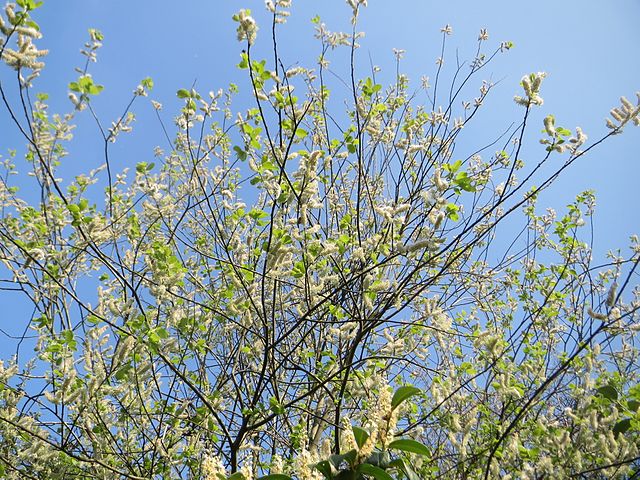A heuristic algorithm for finding treedepth decompositions.
This is a submission for the PACE 2020 challenge. The algorithm relies on:
- a variety of greedy elimination algorithms, and
- Divide & Conquer along cuts obtained using a from-scratch reimplementation of Ben Strasser's 2016 FlowCutter, which is excellently described in the paper Graph Bisection with Pareto Optimization.
The short paper Sallow – a heuristic algorithm for treedepth decompositions gives a more detailed overview. Cite as, e.g.:
@misc{Wrochna20sallow,
author = {Marcin Wrochna},
title = {Sallow -- a heuristic algorithm for treedepth decompositions},
year = {2020},
archivePrefix = {arXiv},
eprint = {2006.07050}
}
Sallows (such as Salix caprea) are willows, a kind of shrub/small tree.
(Photo by AnRo0002)
This repo uses submodules:
- clone with
git clone --recurse-submodules [email protected]:marcinwrochna/sallow.git - if you want, update all submodules with
git submodule update --remote --rebase(this fetches tomasterand tries to rebase your existing changes within each submodule)
Currently the only dependency used is Microsoft's implementation of the C++ Guidelines Support Library.
Standard CMake:
mkdir build && cd build(or wherever you want the build files to be, instead ofbuild/)cmake --config Release ..(or whatever the path to the root CMakeLists.txt is, instead of..)make- Or just open the directory in MSVS Code with the CMake extension installed, and allow it to configure itself.
- CMake ≥ 3.13 and g++ ≥ 7 or clang ≥ 4 (that is, supporting C++17) are required.
- Change
-march=ivybridgetonativeor remove, if needed, inCMakeLists.txt.
sallow input.gr- Interrupt (ctrl+c or SIGINT) to stop and print the best decomposition we have.
- If it hangs (e.g. you ran it in debug mode on extremely large graphs), you need to
pkill -9 sallow. - Input and output format as specified here (DIMACS-like).
- See there also for test instances.
The author is very grateful to the PACE 2020 organizers at the University of Warsaw and the OPTIL.io team at the Poznań University of Technology for making this challenge possible.
This project has received funding from the European Research Council (ERC) under the European Union’s Horizon 2020 research and innovation programme (grant agreement No 714532, PI: Stanislav Živný).


